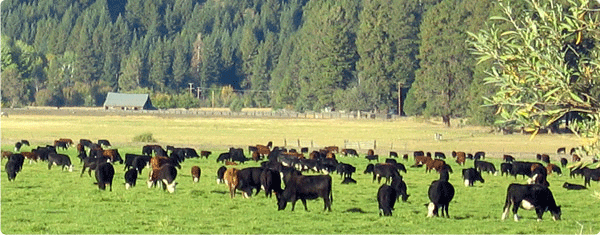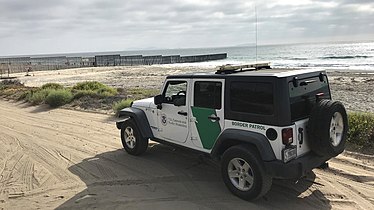
A Farm in California. (Photo: California Department of Food and Agriculture)
California and International Relations
Among California’s international trading partners, only Mexico shares a border with California
By Chris Micheli, July 25, 2020 8:03 am
In California’s Government Code, there is Title 20, which covers International Relations, contained in Sections 99500 through 99524. Chapter 1 covers General Provisions and Chapter 2 covers California-Mexico Border Relations Council.
Chapter 1 provides general provisions. Section 99500 states that the Governor is the primary state officer representing California’s interest in international affairs. The Lt. Governor is the Chair of the California Commission for Economic Development in order to improve trade opportunities for California. The Attorney General assists the federal government in defending against international challenges to California laws.
The Secretary of State oversees the International Business Relations Program. The Department of Food and Agriculture is the primary state agency for the promotion of California agriculture. The National Resources Agency and California Environmental Protection Agency are the primary state agencies for the promotion of international exchange of environmental technologies. The Governor’s Office of Business and Economic Development is the primary state agency responsible for international trade and investment activities.
Section 99501 specifies that the state point of contact within the executive branch acts as the liaison between the state and the Office of the United States Trade Representative on trade-related matters. The state point of contact is also required to perform any duties assigned by the Governor as well as other specified actions.
Section 99502 requires the Office of Planning and Research to maintain and update a comprehensive list of all state agreements made with foreign governments. The list must be updated within 30 days of each new agreement. The list must include specified information. Agencies may separately maintain detailed information or reports as they deem appropriate.
Section 99503 provides that all state employees working under an agency secretary must, within 30 days of traveling out of the country on official state business, provide to the agency secretary a detailed memorandum of the trip’s details and any required follow-up expected. If the state employee does not work for an agency, then the report must go to the Governor’s office. Legislative employees must report to their respective Rules Committee.
Chapter 2 concerns the California – Mexico Border Relations Council. Section 99520 makes numerous findings and declarations of the Legislature, including:
(b) As the second largest United States exporter to Mexico, California has the potential to increase its exports at a faster pace and capitalize on Mexico’s growing economy.
(d) The relationship between Mexico and California generates over $20.9 billion per year for California.
(f) Among California’s international trading partners, only Mexico shares a border with California. In fact, California has four major international border crossings supporting the movement of both persons and goods: San Ysidro, Otay Mesa, Tecate, and Calexico. Of these, Otay Mesa and Calexico accommodate the largest volume of trade. Otay Mesa is the largest California crossing, ranking sixth in the nation. In 2010, these California gateways with Mexico moved $46.9 billion in merchandise.
(j) Despite this critical economic relationship, California has not had a formal mechanism for the past decade devoted to maximizing trade, addressing challenges, and coordinating cross-border programs for trade development between the two countries. This has left California employers and businesses without formal access to Mexican government officials, a major disadvantage to California’s trade industries.
(k) In 2006, the Office of California-Mexico Affairs was established to further and develop favorable relations with Mexican states by cooperating with similar organizations and agencies situated within California, the United States, or Mexico. Important areas of activity include, but are not limited to, enhancing economic development opportunities among the participating states, improving working conditions and living standards, and fostering the protection and improvement of the environment in Mexico and California.
(l) To help carry out these duties the California-Mexico Border Relations Council was also established to identify new border priorities and fundable projects in the areas of infrastructure, trade, environment, health, and security while supporting current and ongoing activities such as the Border Governors Conference, trade missions, and border workgroups, and coordinating specific future projects with Mexico. Priorities and projects identified by the California-Mexico Border Relations Council shall be funded pursuant to Section 71101 of the Public Resources Code, establishing the California Border Environmental and Public Health Protection Fund.
(m) It is critical for California that state agencies continue to address important United States-Mexico issues.
(n) Furthermore, California should maximize its economic relationship with Mexico to improve the state’s economy, to maximize the amount of exports, and create more California jobs.
(o) Therefore, the Legislature finds that California needs a formalized trade relationship with Mexico. Establishing an official trade relationship with Mexico will help ensure that the state can improve its global competitiveness and protect California industry, proactively support the expansion and location of businesses in California, provide international business assistance to California businesses, and support their entry and successful participation in the growing Mexican marketplace.
(p) The California-Mexico Border Relations Council provides a focal point in state government to serve as a clearinghouse for information and assistance to other state agencies that are involved with Mexico.
Section 99521 provides definitions for the words “border,” “Council,” and “Public agency.”
Section 99522 establishes the California-Mexico Border Relations Council in state government. The Council consists of the Director of the Governor’s Office of Business and Economic Development, the Secretary of the Natural Resources Agency, the Secretary for Environmental Protection, the Secretary of California Health and Human Services, the Secretary of Transportation, the Secretary of Food and Agriculture, the Secretary of State and Consumer Services, and the Director of Emergency Services. And, the Secretary for Environmental Protection shall chair the council.
Section 99523 requires the Council to do all the following:
(a) Coordinate activities of state agencies that are related to cross-border programs, initiatives, projects, and partnerships that exist within state government, to improve the effectiveness of state and local efforts that are of concern between California and Mexico.
(b) Invite representatives of the State of Baja California and the Mexican government to participate in meetings.
(c) Establish policies to coordinate the collection and sharing of data related to cross-border issues between and among agencies.
(d) Establish the Border Region Solid Waste Working Group to develop and coordinate long-term solutions to address and remediate problems associated with waste tires, solid waste, and excessive sedimentation along the border that cause the degradation of valuable estuarine and riparian habitats, and threaten water quality and public health in the state.
(e) Identify and recommend to the Legislature changes in law needed to achieve the goals of this section.
Section 99524 requires the Council to submit a report to the Legislature on the Council’s activities annually.
- Frequently Asked Questions about Privileges of Voters in California - April 23, 2024
- Does a Bill Need Statutory Construction Guidance? - April 22, 2024
- Frequently Asked Questions about Lobbying Support Services - April 22, 2024





2 thoughts on “California and International Relations”